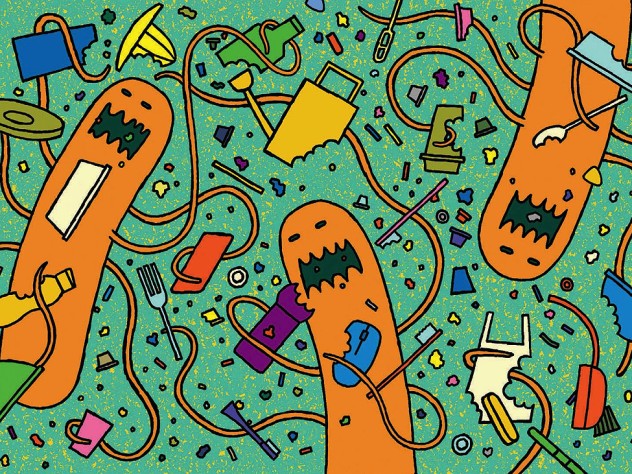Polishing off Plastic Pollution? “There’s a great future in plastics.” The iconic line, advice to a fresh-from-college ingenue played by Dustin Hoffman in the 1967 film The Graduate, was intended for laughs. But in 2023, it highlights a grim reality.
The world’s economies generate roughly 400 million tons of plastic waste each year. And only nine percent of that waste is recycled. This is according to a 2022 report from the Organization for Economic Cooperation and Development. Some is incinerated, but the bulk of plastic trash ends up in landfills or the environment. And when that discarded plastic gets battered by sunlight or ocean waves, it can release microplastics, tiny particles that are increasingly finding their way into air, food, and water and turning up in tests of human blood.
Even the small proportion of plastic that is recycled presents a range of challenges, say the experts. The molecular structure of plastic includes unreactive carbon chains that render it extremely durable and difficult to break down. (Depending on the type, plastic can take decades or even hundreds of years to fully decay.) The mechanical recycling process is labor-intensive and expensive, and chemical recycling releases toxic emissions. This involves shredding and melting plastic waste into pellets for reuse
Enter a group of Harvard scientists who are looking to nature and the lab for solutions.
During the past two years, researchers at the Wyss Institute for Biologically Inspired Engineering in the laboratories of Folkman professor of vascular biology Don Ingber and Winthrop professor of genetics George Church have been working to identify organisms that naturally degrade plastic. Next, they plan to enhance the organisms’ capabilities via genetic modification.
Polishing off Plastic Pollution?
“Recycling is basically a myth. Nothing really gets recycled—it ends up in the landfills and oceans and leads to toxic gases being released,” said Sukanya Punthambaker, one of the project’s lead researchers and a postdoctoral fellow studying synthetic biology in Church’s lab. “Several hundred million tons of plastic are generated each year, and it’s not going to go anywhere…in our lifetimes unless we develop a strong intervention.”
The search for plastic-metabolizing microbes spanned ponds, landfills, waste sites, and even the cells of certain animals, where the researchers tested for “plastivores,” organisms that have evolved to gorge on the synthetic material.
“We go back into nature and see what it has given us,” said Vaskar Gnyawali, a postdoctoral fellow in Ingber’s lab working on biosensors and microengineering. Gnyawali notes that the natural approach to breaking down plastics is more environmentally friendly than chemical recycling solutions. Microbial degradation is also safer than shredding, which generates microplastics that affect “every part of the ecosystem.” Naturally occurring microbes that consume plastic, he explains, instead produce water, carbon dioxide, and organic material known as biomass.
Read more at harvardmagazine.com
Photo: harvardmagazine.com


Leave a Reply